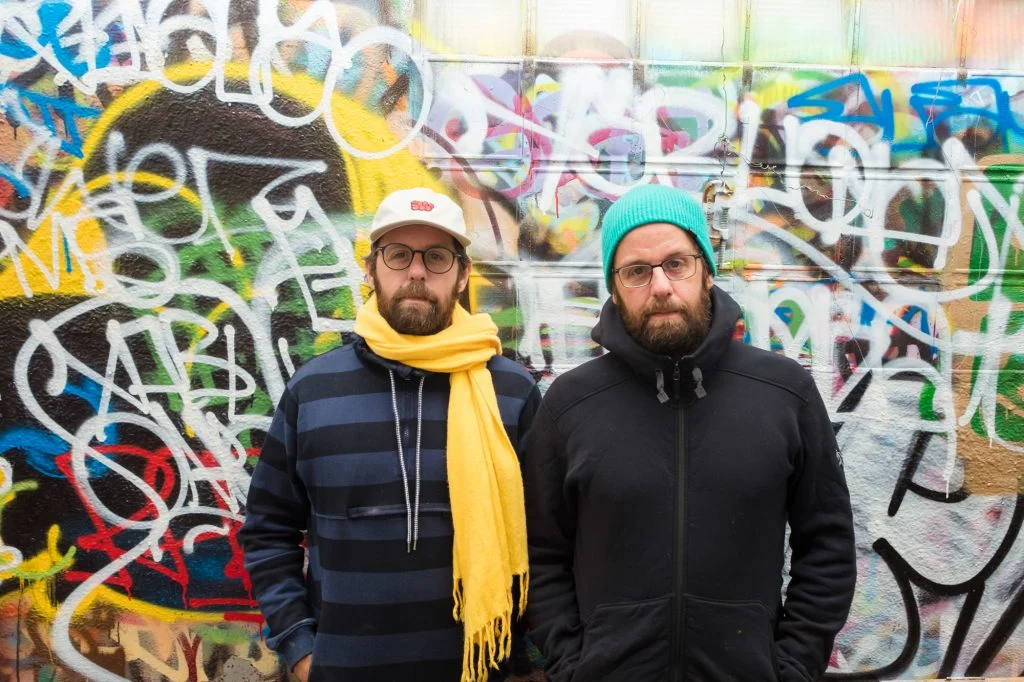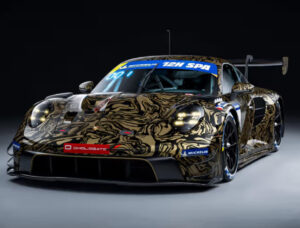In the ever-expanding world of contemporary art, few duos have captivated audiences as consistently and profoundly as Osgemeos. Born Otávio and Gustavo Pandolfo in São Paulo, Brazil, the twin brothers have become global icons of street art, celebrated for their dreamlike imagery, vibrant colors, and whimsical characters. Their latest exhibition, hosted by the Hirshhorn Museum in Washington, D.C., is not just a showcase of their stunning works—it’s an immersive journey into their creative process and their vivid, fantastical universe.
A Brief History of Osgemeos
The story of Osgemeos (Portuguese for “The Twins”) begins in the streets of Cambuci, a working-class neighborhood in São Paulo. Growing up in the 1980s, Otávio and Gustavo were surrounded by the burgeoning graffiti scene, which was heavily influenced by hip-hop culture imported from the United States. What began as an outlet for youthful expression soon became a calling, as the twins developed a unique visual language that blended Brazilian folklore, social commentary, and surrealism.
Their work quickly gained recognition for its distinct style. Osgemeos’s murals often feature elongated, yellow-skinned characters dressed in patchwork clothing, surrounded by dreamlike landscapes and intricate patterns. These figures, which the brothers describe as “citizens of our world,” are inspired by the people, stories, and rhythms of Brazil, but they resonate universally. Over the years, their art has evolved from graffiti on São Paulo’s walls to large-scale murals, gallery installations, and collaborations with brands and institutions worldwide.
The Hirshhorn Exhibition: A Deep Dive Into Creativity
The Hirshhorn Museum’s new exhibition represents one of the most comprehensive explorations of Osgemeos’s work to date. Spanning decades of creativity, the show features a mix of their signature murals, paintings, sculptures, and multimedia installations. However, it goes beyond showcasing finished pieces. The museum delves into the brothers’ working process, offering visitors a glimpse into the imagination and collaboration that drives their art.
Immersive Installations
Visitors to the Hirshhorn are greeted by a series of immersive installations that transport them into Osgemeos’s world. One room might feel like stepping into a surreal dreamscape, with walls covered in vibrant murals and floors littered with whimsical sculptures. Another might resemble a chaotic artist’s studio, filled with sketches, paint cans, and works in progress. These spaces reflect the dynamic and playful energy that defines the twins’ work.
The “Yellow People”
At the heart of the exhibition are the yellow-skinned characters that have become synonymous with Osgemeos’s style. These figures, often depicted in everyday situations or surreal scenarios, are both personal and universal. They represent the people and stories of Brazil but also embody a shared humanity. By populating their art with these figures, Osgemeos invite viewers to step into a world where imagination and reality coexist.
Multimedia and Music
Music has always played a significant role in Osgemeos’s art, and the Hirshhorn exhibition highlights this connection. From soundscapes that accompany their installations to works inspired by the rhythms of Brazilian culture, music adds another layer of sensory engagement. The exhibition also features elements of performance, such as video projections and kinetic sculptures, demonstrating the twins’ ability to push the boundaries of traditional art forms.
Themes and Inspirations
Osgemeos’s art is deeply rooted in their personal experiences and cultural heritage. Their work often explores themes of identity, community, and resilience, reflecting the struggles and triumphs of life in São Paulo. However, it also transcends these themes, delving into the realms of dreams, spirituality, and collective memory.
Social Commentary
Many of Osgemeos’s works carry a subtle yet powerful critique of social and economic inequality. In their murals, the whimsical characters often navigate urban environments marked by poverty, chaos, and resilience. By juxtaposing playful imagery with harsh realities, the brothers invite viewers to consider the contradictions and complexities of modern life.
Dreams and Surrealism
Dreams play a central role in Osgemeos’s creative process. The twins have described how their dreams often inspire their art, leading to fantastical imagery that blurs the line between reality and imagination. This dreamlike quality gives their work a universal appeal, allowing viewers to interpret it through their own experiences and emotions.
Brazilian Culture
From samba and capoeira to the vibrant patterns of Brazilian textiles, Osgemeos’s art is infused with the colors, rhythms, and traditions of their homeland. By incorporating these elements into their work, the twins celebrate Brazil’s rich cultural heritage while also challenging stereotypes and clichés about the country.
From Streets to Galleries: Bridging Worlds
One of the most remarkable aspects of Osgemeos’s career is their ability to navigate the worlds of street art and fine art seamlessly. While their roots remain firmly planted in graffiti culture, they have successfully brought their work into galleries and museums without losing its authenticity or edge.
Street Art Legacy
For Osgemeos, the streets were their first canvas and remain a vital part of their practice. Their large-scale murals can be found on walls across the globe, from São Paulo to New York, Berlin, and beyond. These works are often created in collaboration with local communities, adding another layer of meaning and connection.
Museum Recognition
The Hirshhorn exhibition is not Osgemeos’s first foray into the world of high art. Over the years, they have exhibited at prestigious institutions like the Tate Modern in London and the Museum of Contemporary Art in Los Angeles. Each time, they have managed to bring the energy and ethos of the streets into these spaces, challenging traditional notions of what art can be.
The Impact of Osgemeos
Osgemeos’s work has had a profound impression on both the art world and the communities they represent. Their ability to blend social commentary with playful imagery has made their art accessible and inspiring to a wide audience. At the same time, their success has helped legitimize street art as a vital and dynamic form of contemporary expression.
Inspiring New Generations
For young artists, particularly those from marginalized communities, Osgemeos represent a beacon of possibility. Their journey from the streets of São Paulo to the world’s most prestigious museums shows that it’s possible to stay true to your roots while achieving global recognition.
A Universal Message
At its core, Osgemeos’s art is about connection. Whether through the relatable struggles of their characters or the joy and vibrancy of their colors, their work speaks to a shared humanity. In a world often divided by borders, politics, and prejudices, their art reminds us of what we have in common.
Impression
The Hirshhorn Museum’s Osgemeos exhibition is more than a showcase of artistic talent—it’s a celebration of creativity, resilience, and the power of imagination. By delving into the brothers’ working process and vivid oeuvre, the museum offers visitors a chance to experience art that is both deeply personal and universally resonant.
As Otávio and Gustavo continue to push the boundaries of their craft, their work serves as a testament to the transformative power of art. Whether on a wall in São Paulo or a gallery in Washington, D.C., Osgemeos’s vibrant, playful creations remind us of the beauty and complexity of the world around us—and the endless possibilities of the world within us.
No comments yet.








